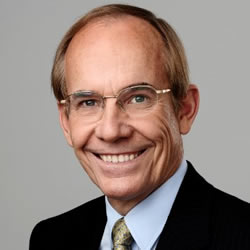The circular economy employs recycling, repair, reuse, remanufacturing, refurbishment, and sharing to offer remedies for our global waste crisis. There have been many calls for a shift from linear to circular – appeals to consumers to change their ways and to businesses to alter their practices to save the environment. State governments and municipal councils have funded investigations into how to solve the problem of waste and landfill.
For business, investing in the circular economy appears to be a costly responsibility, though a necessary and inevitable one. Companies see the need to invest in a modified business model and may dutifully pay the price for the good of our planet. Unsurprisingly, there’s a degree of resistance.
For those businesses who do embrace the circular economy the big secret is that any cost is offset by the strategic opportunities of an extended business model. This leads to good, old-fashioned benefits like business growth and an uptick in profit.
Here I look at two major companies each of which has not only sought to modify their existing business model but also to extend it. There are lessons here for how your executive team and business might engage more effectively with circularity.
Extending to Customers’ Customers
SKF is the world’s leading manufacturer of ball and roller bearings. It has over 40,000 employees and sells its products through a global network of more than 17,000 distributors. The company announced that it had embarked on a “journey of sustainable rotation.” The recently stepped down CEO, Alrik Danielson, has stated: “We are realizing the circular economy.”
One result is that now it “remanufactures” used bearings. “Bearings do not need to go to waste at the end of life but instead go back to the factory to be remanufactured and given a new life.” This, the company points out, reducing energy consumption by 80 per cent as well as cutting back on high-grade steel use.
But SKF has found that engaging with the circular economy has done more than merely help it modify its existing business model. It has extended it.
Johan Lannering Director of Sustainability at SKF explains how this comes about. “The circular economy involves having conversations with the customers’ customers about where they’ll be in five years’ time.” From a business model point of view these discussions lead to a deeper partnership which ultimately improves the customer’s uptime and quality.
One example concerns how SKF has turned its attention to oil and its use by customers. Oil plays an integral role in the performance and longevity of bearings. The linear practice has oil used and discarded. SKF has developed a new, patented method which it calls Double Separation Technology (DST).
The company explains: “With DST, particles and other impurities down to nano-size can be captured and separated from the oil. This enables circular recovery and reuse of industrial oils – with all original properties retained.”
Lannering explains that “the magic” lies in creating an atmosphere of co-creation on how to solve issues. The key thing is to create an open strategic dialogue where you can find mutual benefits. This leads to an increased understanding of customer needs, better use of assets, an improved reputation in the industry and business model extension. This virtuous circle produces business growth.
Extending to New Business
IKEA is turning to repair and reuse in its new business model and has announced that it aims to be 100% circular by 2030. It has reacted to the fact that in Norway, alone, over three million pieces of furniture are thrown away every year.
Malin Nordin, previously Head of Circular Development at IKEA Group explains what this means as a business model. “We want to be circular in every aspect of our business. We want to make it easier for customers to acquire, care for and pass on products in circular ways, such as repairing, reusing, reselling, and recycling them.” The company has modified its business model to operate buyback programs issuing vouchers for further IKEA purchases in 27 markets including Australia, Germany, Netherlands, Russia, and Spain.
But IKEA has gone a step further to extend its business model. Customers can now bring their used furniture to IKEA for refurbishment and resale. It recently opened its first pilot store in Eskilstuna in Sweden.
The company is working with the local Eskilstuna municipality to source used furniture in the local area and has established partnerships with social entrepreneurs for cleaning and repair. It also works with circular-economy experts GIAB on logistics.
Per Stolz, Sustainability Policy and Strategy Specialist at Ingka Group in Sweden (the franchised arm of IKEA Group) explains how extended thinking works: “When you think circular, you expand your playing field. You’re navigating in totally new waters. You have a whole new set of partners to engage and work with. You collaborate with different stakeholders with whom you hadn’t been engaging.”
These new collaborations push the company into new partnership in new markets and sectors, exposing IKEA to all the opportunities that entails.
Extending Your Business Model
Igniting executive interest in a circular economy solution will require something more than a conversation about re-engineering your existing business. That modification simply sounds like costly, time-consuming hard work and, frankly, not very exciting. You may find that you’re met with a here-we-go-again response.
To add some sizzle into the discussion, extend your deliberations beyond the economics of circularity to encompass the strategic opportunities of circularity. You’re more likely to find that your managers’ leaning in with their eyes lit up.
SKF, IKEA and others in the circular economy space are excited not just by the impact of circularity on their existing business but also by the opportunities that circularity opens for new business.
You should be too.
———————————–
Author – Graham Kenny

